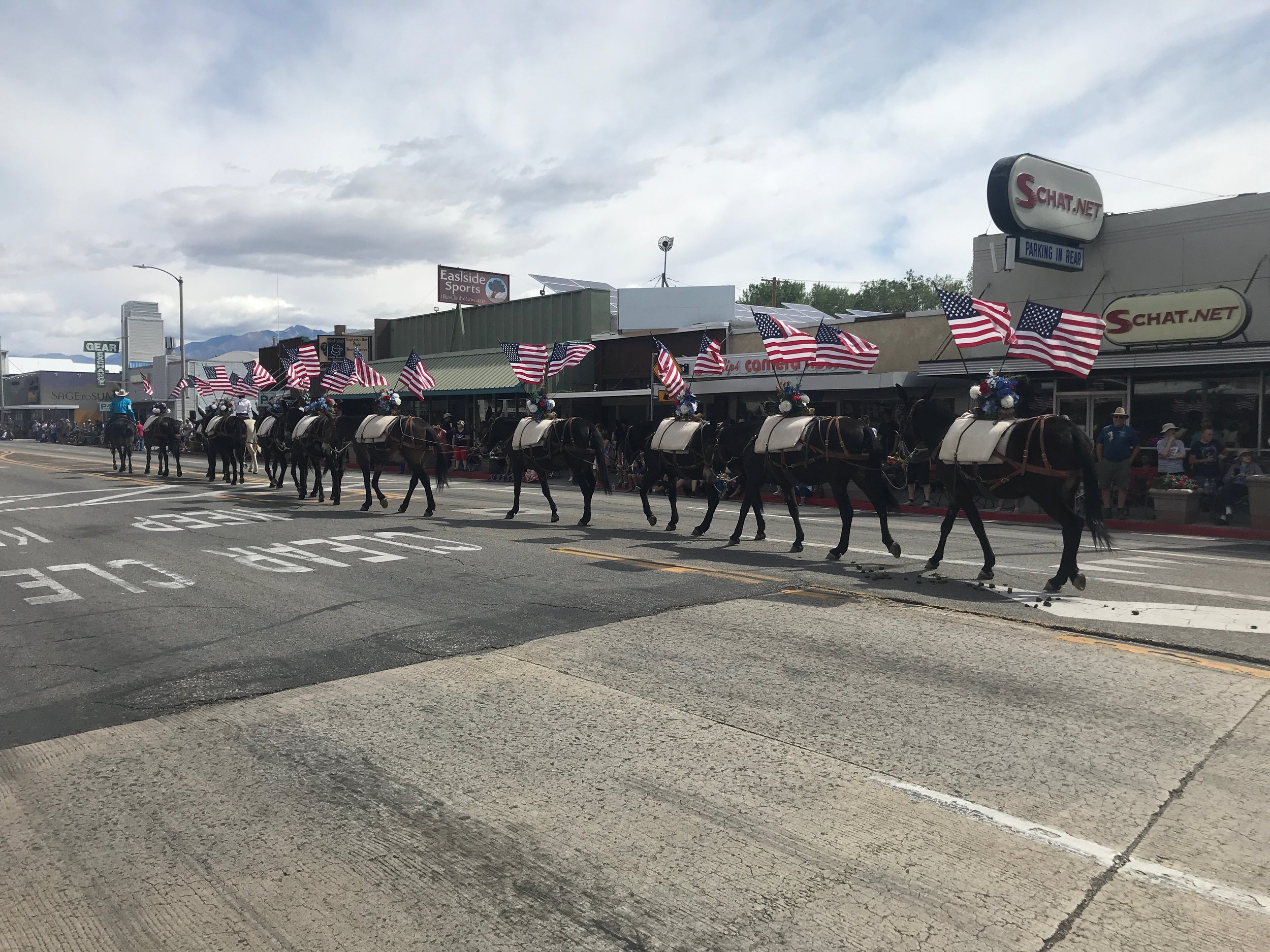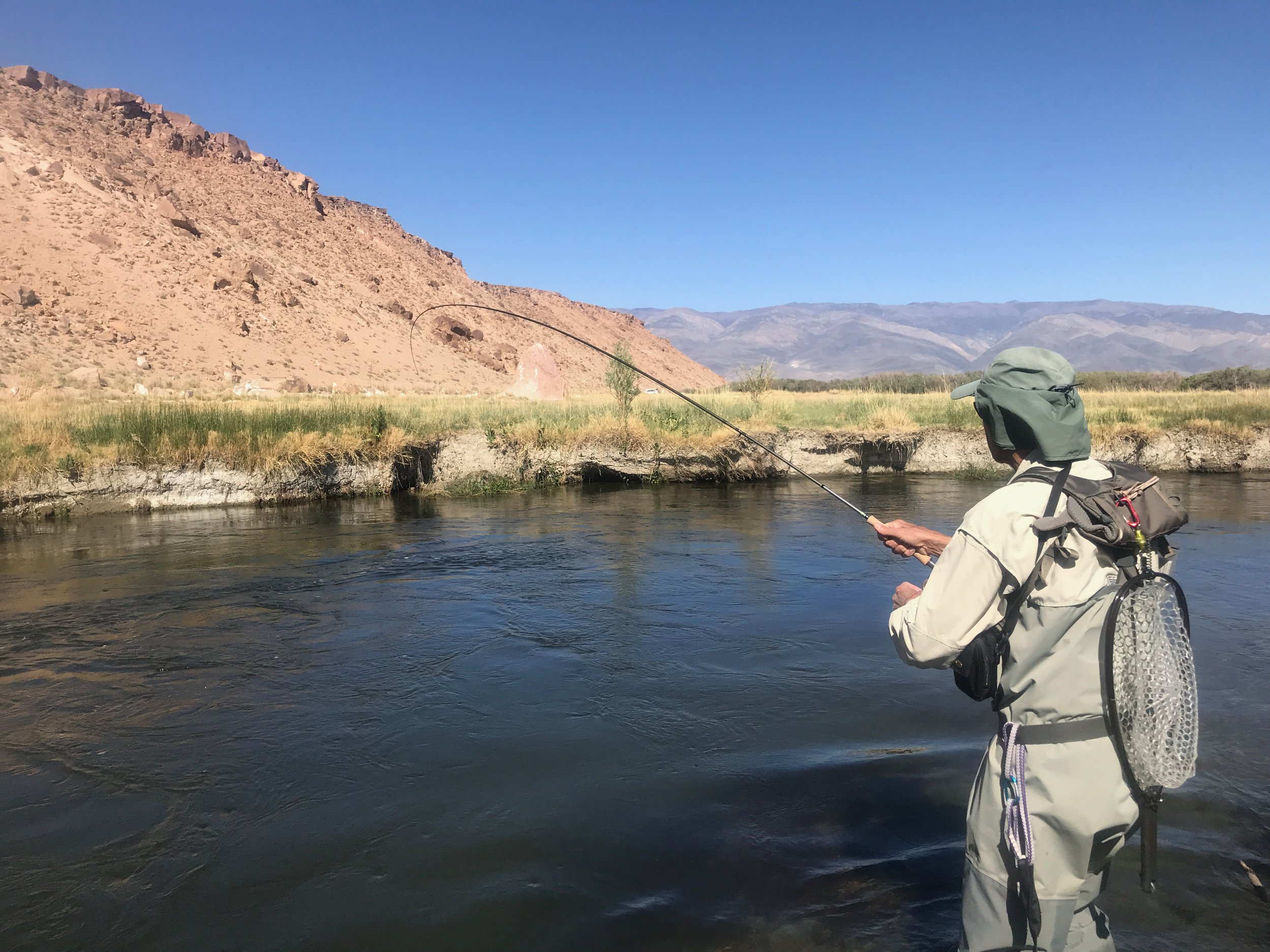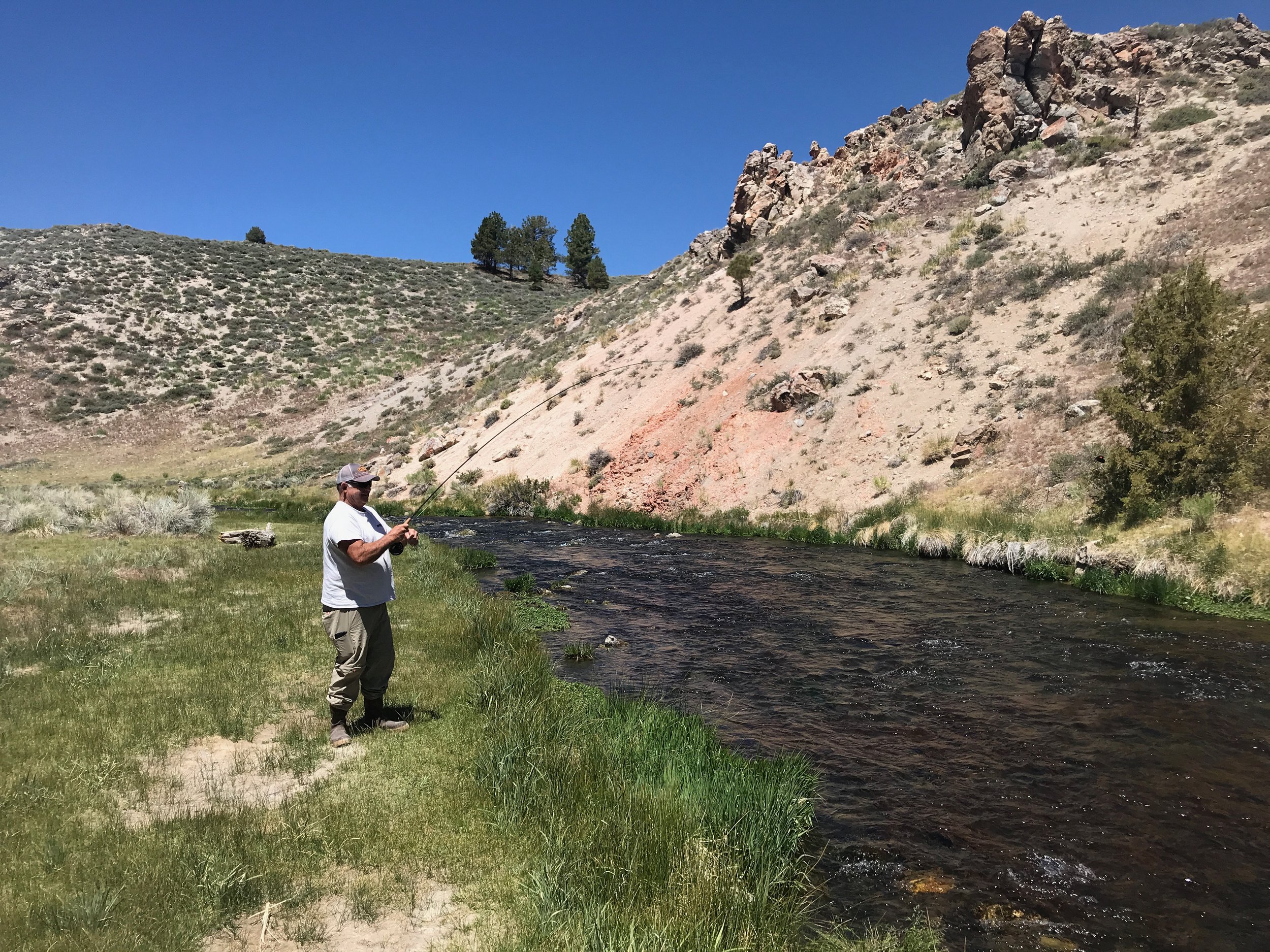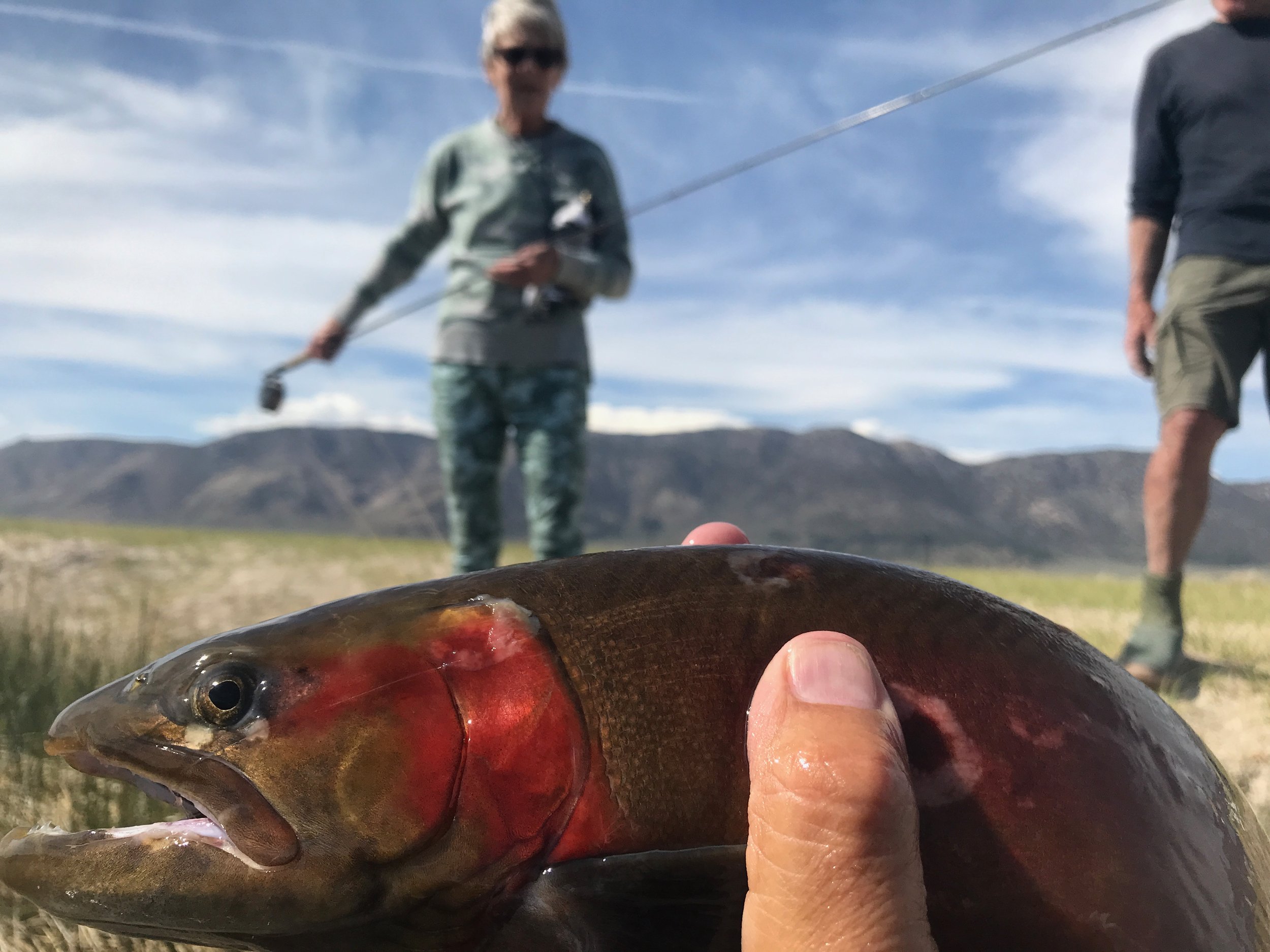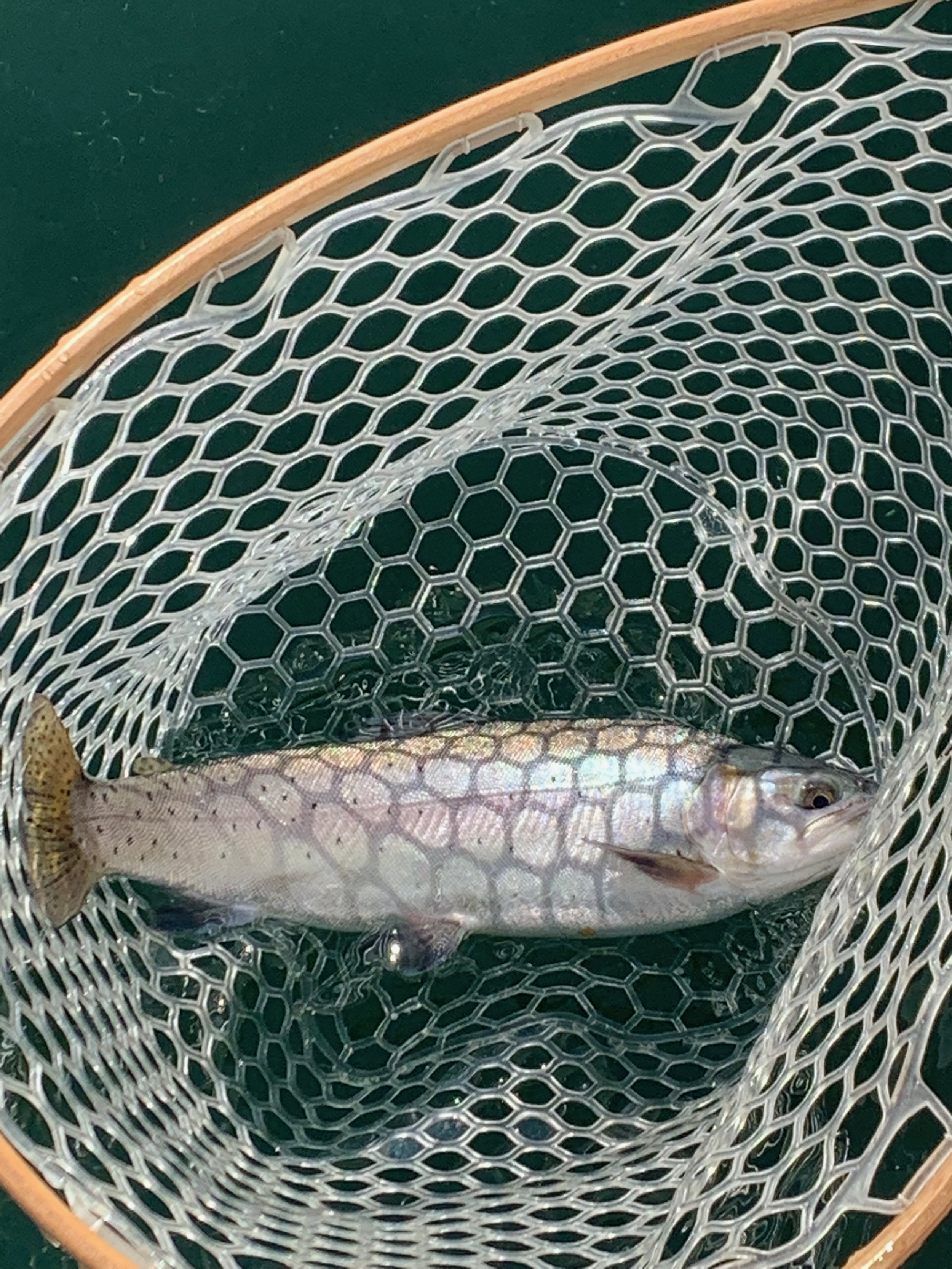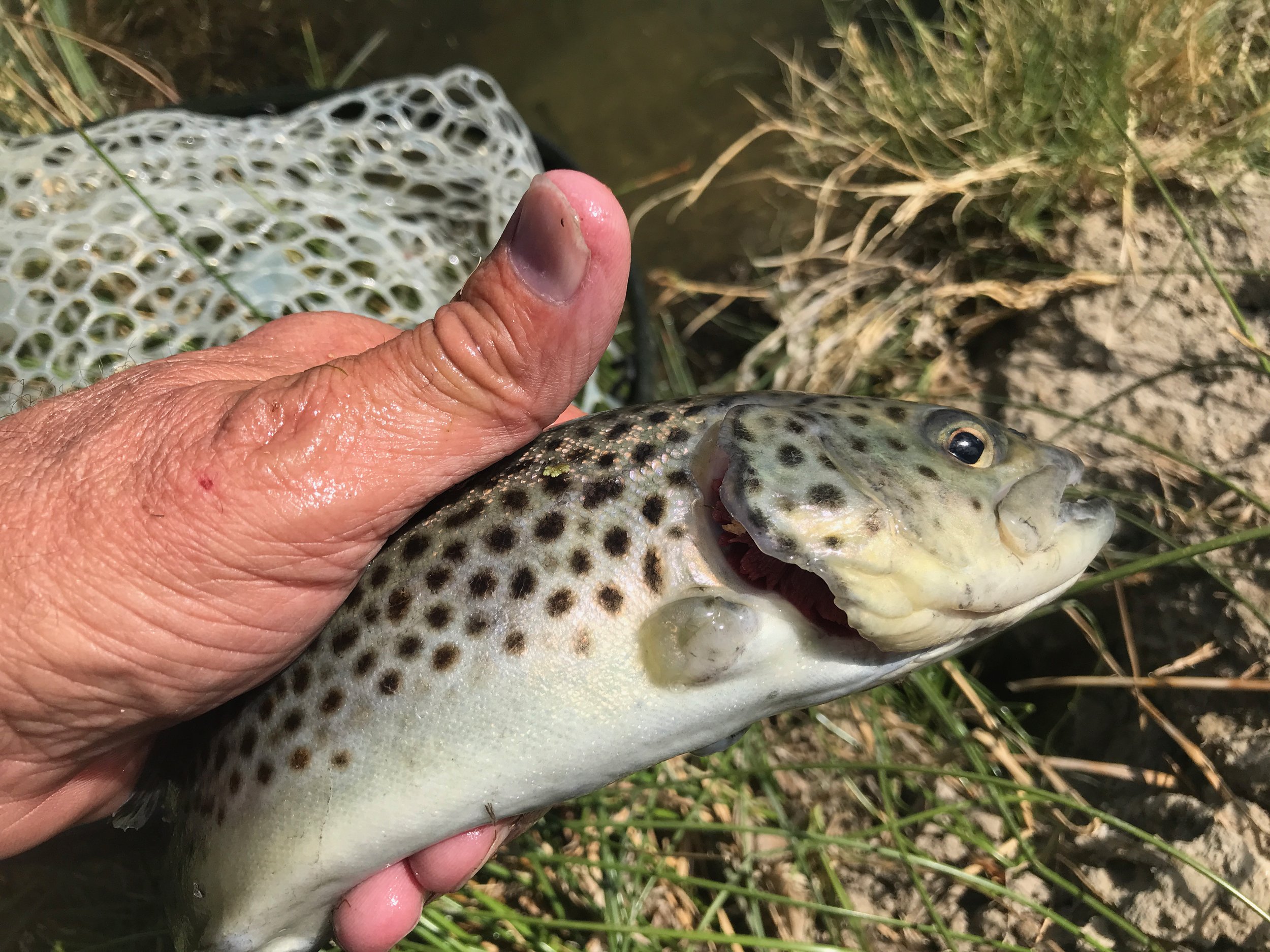When the wind is not blowing fly fishers off the water the fly fishing in the Eastern Sierra has been good. The cutthroat spawn in the Crowley Lake tributaries has come to an end. Hatches of mayflies, stoneflies, and caddis flies are beginning. The days are warming as we head towards summer solstice. Nymphing is providing the bulk of the action, but it will not be long that dry flies dominate the Eastern Sierra fly fishing scene.
Bishop Mules days parade was back and the streets were lined with a great crowd.
Lower Owens River:
Wild Trout Section:
The lower Owens River is coming up and flows at the time of this posting are up to 230 CFS. Flows of 300 CFS is at the top limit of being able to wade the river. With Eastern Sierra streams opening up the fly fishing pressure on the lower Owens River has dissipated. There are hatches of blue wing olive mayflies, pale morning dun mayflies, little yellow stoneflies, and caddis flies, but the trout have not been coming to the surface consistently to feed on the hatching insects. Nymphing, primarily Euro nymphing, has been the most productive method of fly fishing the river. I’m using olive quilldigons, hot spot pheasant tail nymphs, Frenchie’s, stoner nymphs, bead head flash back pheasant tail nymphs, and bead head flash back gold ribbed hare’s ears. The key is to get the nymphs down on the substrate where the trout are feeding.
Euro nymphing is the most productive way to fly fish the wild trout section of the Owens River right now.
Hot Creek:
Interpretive Site:
With hatches still sporadic fly fishing in the interpretive site is tough. Nymphing with bead head flash back pheasant tail nymphs, bead head flash back gold ribbed hare’s ears, midges nymphs and pupae in tiger and zebra coloration, and scuds under a dry fly is producing a few trout. The insects are active from about 10:00 to 2:00 P.M. As summer approaches the insect hatches will intensify and the dry fly action will improve.
Erik Skasick from Brea hooked up to a wild rainbow trout in the canyon section of Hot Creek fishing with a size 18 bead head flash back pheasant tail nymph.
Hot Creek:
Canyon Section:
The increased gradient in the canyon section of Hot Creek means the trout have to react to the fly patterns quickly unlike the interpretive site where the fish can scrutinize the fly patterns. This makes catching the trout in the canyon section easier. Bead head flash back pheasant tail nymphs in size 18, and bead head flash back gold ribbed hare’s ears in size 16, olive burlap caddis in size 14, size 18 cream or gray caddis pupae, and olive scuds in size 12 are fooling wild rainbows and browns. I’m fishing the nymphs under a size 16 Adams parachute, size 12 Chernobyl ant, or size 12 Morrish hopper.
This is the last cutthroat of the season for me in a season that saw lots of cutthroats in the upper Owens River.
Upper Owens River:
Above Benton Crossing Bridge:
The cutthroat spawn is coming to an end. Most of the spawners have returned to the lake or died due to the rigors of spawning. Resident trout and juvenile trout will provide the action for fly fishers until Fall when the spawning browns return. Pale morning dun mayflies will be the first hatch to show up and should be hatching in the next week or two. Grass hoppers will be next along with caddis.
A chunky 16 inch cutthroat that took a tiger midge fished 18 inches off the bottom in McGee Bay on Crowley Lake.
Crowley Lake:
When the wind is not blowing the boats of the lake midge fly fishing has been good in McGee Bay on the northwest side, Sandy Point, Six Bays, and North Landing. The fish have moved out into deeper water from 15 to 25 feet. Midges in gray, tiger, zebra, and Albino Barons are producing the trout. Windless afternoons have been producing trout for the few fly fishers that explore the lake after the morning bite. One of the keys to success on the lake is to vary the depth of your midge. I fish my midges from three inches to four feet of the bottom.
This brown trout caught in Bishop Creek Canal has its pectoral fins clipped showing that it is a stocked trout.
Bishop Creek Canal:
Behind the Ford Dealer:
Nymphing under an indicator with size 18 bead head flash back pheasant tail nymphs, and size 16 bead head flash back gold ribbed hare’s ears is fooling wild and stocked brown trout. I like to fish the faster water sections of the canal below the Los Angeles Department of Water and Power weirs. These oxygenated sections have a good concentration of trout. You need to get a good drag free drift to fool the wild trout.

